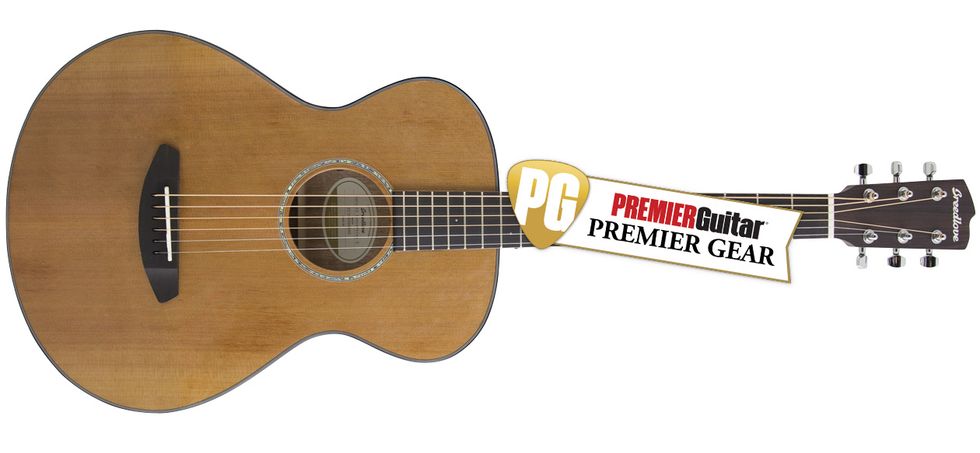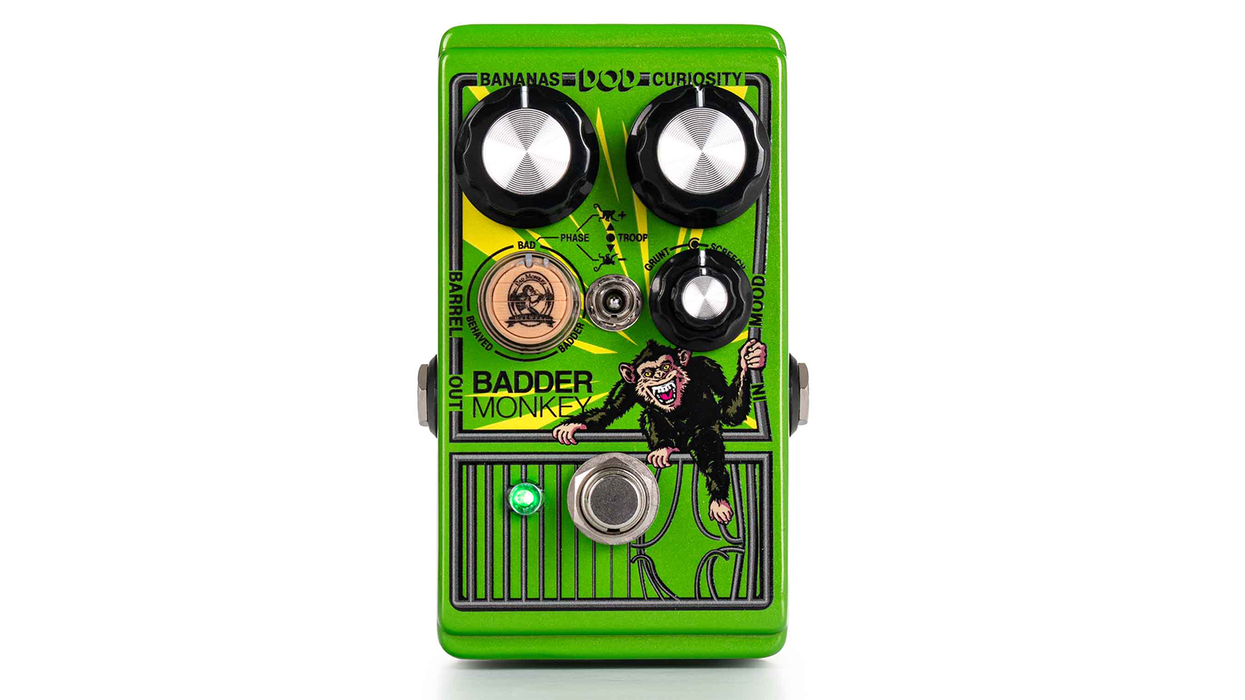RatingsPros:Surprising dynamic range for a small body. Great playability and personality, plus a sweet electronics package. Cons: Gigbag isn’t the most protective. Street: $499 Breedlove Pursuit Concertina E breedlovemusic.com | Tones: Playability: Build/Design: Value: |
Breedlove Guitars has always been known for their willingness to deviate from acoustic-design convention. Features like their pinless bridge and the JLD truss system (a dowel spanning the bridge and tail block that counteracts tension exerted on the top and increases sustain and resonance) helped distinguish Breedlove as a forward-thinking brand. But they also contributed to what many players classify as a more modern tone signature—an alternative to established mid-20th-century acoustic sound templates.
Breedlove is also known for specialized body styles. Last year, the company introduced a new platform: the Concertina, a 12-fret, small-body flattop that is clearly a response to the parlor guitar renaissance of recent years. Now, the Concertina is available as part of the affordable Pursuit series, which is designed in the United States and made in China. I checked out the Pursuit Concertina E, with its LR Baggs electronics, which sells for about $500 street, and it’s an outstanding guitar for the money.
Not Your Father’s Budget Guitar
While the Concertina’s relatively insubstantial gigbag didn’t make the best first impression (you may want to seek a replacement down the line), once I had the instrument in my lap I succumbed to its charms immediately.
The Concertina E is lovely, with a simple abalone rosette, black-and-white purfling, and tortoise binding. The solid western red cedar top has a rich, amber finish, and the laminated mahogany back and sides have subtle but beautiful beeswing figuring. The instrument appears to have been built with great pride and care, too. The body’s gloss finish is free from imperfections and areal attention to detail is apparent inside the body as well. Nothing about the Concertina screams or even murmurs budget guitar.
The guitar feels as good as it looks. It’s light and balanced, whether in your lap or in the standing position. (Conveniently, a strap button is installed on the heel). The 25" scale occupies a comfortable middle ground between Gibson’s 24 3/4" scale and Martin’s 25.4". With a relatively slim C-shape profile, the neck probably won’t appeal to traditionalists who favor fat V-shaped necks. But it’s extremely comfortable and fast, and perfect for beginners and players more accustomed to electrics.
The nut-width measures 1.69", and though some finicky fingerstyle players might find it cramped, it was more than comfortable enough for me to execute the complex chord shapes in the Bach arrangements I played on the instrument. The action is low, but not overly so. And it’s easy to imagine the relative satisfaction of a beginner learning their first F barre chord on the Concertina E. Half- and even whole-step bends are easy to execute on the upper strings, which blues and rock players will love.
Out on the Range
Overall, the Concertina has a warm, dry, and super-likeable voice that clearly communicates the qualities of the cedar-and-mahogany tonewood combination. It’s got a bit more punch and projection than I expected, which is always a welcome surprise for a small-bodied guitar. It’s also balanced and dynamic, with sensitivity enough to convey fingerstyle nuance and the headroom to accommodate forceful flatpicking.
The Concertina E’s dynamism also translates to surprising complexity. The Concertina E responded nicely to all types of chord voicings, from basic open grips to tightly voiced jazz chords. There’s a perceptible smoothness and note separation that certainly exceeded my expectations. Sustain is excellent, too, and single notes ring with a faint naturally reverberative quality. On the treble strings, the response is sweet, clear, and not at all plinky, like many guitars in this class. The midrange, meanwhile, has an appreciable bark.
Weak spots are few. I did find the low-end response to be slightly lukewarm at times on the 6th string. But I was easily able to compensate by picking the bass notes harder and strumming chordal accents more lightly, and weaker low-end response is typical of a small-bodied guitar—even expensive ones.
Pretty Plugged In
The Concertina comes complete with the EAS (Element Active System) by LR Baggs. This undersaddle pickup sounds excellent. It’s also physically discrete, with a single control—a volume thumbwheel knob—tucked away at the edge of the soundhole. Plugged into a Fender Acoustasonic amp, the Concertina sounds warm and natural—very much like it does unplugged—without the compression and quack common among undersaddle pickups.
The Verdict
The Concertina E is one of those affordable guitars that remind you that we live in a relative golden age of guitar building, where real quality is available to even the most cost-constrained players. And while it’s affordable enough for a beginner, I suspect more than a few budget-minded pros would be thrilled by the potential of this little flattop.




![Rig Rundown: Russian Circles’ Mike Sullivan [2025]](https://www.premierguitar.com/media-library/youtube.jpg?id=62303631&width=1245&height=700&quality=70&coordinates=0%2C0%2C0%2C0)
















